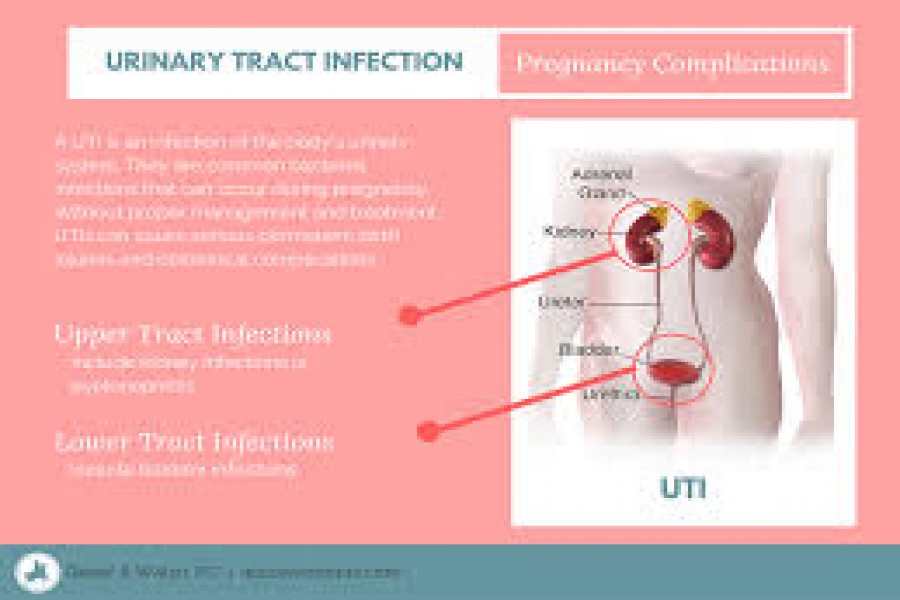Prevention is better than cure: Accessibility to clean toilets to fight UTI

Published :
Updated :

Urinary tract infection (UTI), defined as an infection in any part of the urinary system — kidneys, ureters, bladder, and urethra, is a leading cause of morbidity in the female population, with high levels of prevalence and recurrence within 6 months. Frequent recurrence of the infection may even lead to cancer, kidney failure, etc. About 50% of all females get a UTI during their lifetime. UTI occurs when the urinary system becomes infected with a pathogen (most frequently, bacteria). Many UTIs are not serious but if the infection reaches the kidneys, serious illness, and even death, can occur.
Its symptoms include a strong persistent urge to urinate, burning sensation when urinating, passing frequent small amounts of urine, urine that appears red, bright pink cloudy or cola-colored — a sign of blood in the urine, etc. UTI symptoms may be overlooked or mistaken for other conditions in older adults.
Urinary tract infections represent one of the most frequent reasons for hospitalization. As a result of their occurrence from community-based origins as well as those that develop in the hospital setting, it represents a tremendous burden to the global healthcare system. According to Raisa O Platte of American Urogynecologic Society, annual health costs for UTI exceed $1 billion in the USA only. The annual cost of treating UTIs is substantial, with studies from France reporting €58 million.
For generations, urinary tract infections, one of the world’s most common ailments, have been easily and quickly cured with a simple course of antibiotics. Although severe kidney infections are often treated in the hospital with IV antibiotics, most UTIs (and many mild-to-moderate kidney infections) are treated with oral antibiotics.
But according to a study, titled 'Etiology and Antimicrobial Susceptibility Patterns of Urinary Tract Infection carried out in Dhaka Shishu (children) hospital', published in the Northern International Medical College Journal, scientists warn that urinary tract pathogens are developing resistance to antibiotics in Bangladesh.
Early evaluation and effective treatment measures for the disease are getting difficult as there is growing evidence that the infections, which afflict millions a year, mostly women, are increasingly resistant to these medicines, turning a once-routine diagnosis into one that is leading to more hospitalizations, graver illnesses and prolonged discomfort from the excruciating burning sensation that the infection brings.
Uro-pathogens has become a public health concern in Bangladesh, with growing drug resistance. Experts suggest the use of drugs that are less commonly prescribed by practitioners for stunning the pathogens in UTI patients. But at the end of the day, prevention is better than cure.
Having little or no access to clean, hygienic and women friendly toilets- are the leading causes of UTI for the women in Bangladesh. There is a lack of women-friendly toilets in our country. Although public toilets are seen everywhere, most of them are primarily made for men. These toilets are almost always useless, dirty.
When women participate in various activities outside the house, in the office, in the market, many refrain from drinking the necessary water to avoid going to the toilet. Not drinking enough fluids (slows the wash of pathogens out of the body) and waiting to urinate (promotes reverse bacterial movement) are the top risk factors of UTI occurrence. As a result, women suffer from various health risks including UTI, kidney problems.
As a socially responsible brand, ‘Harpic’ has always emphasized on the importance of clean-hygienic toilets and has been working to ensure germ-free, clean toilets for more than 40 years in Bangladesh. To spread awareness about the dangers and vastness of UTI, the brand has recently launched a digital campaign called #Harpic Against Uti.
-rmc//


 For all latest news, follow The Financial Express Google News channel.
For all latest news, follow The Financial Express Google News channel.